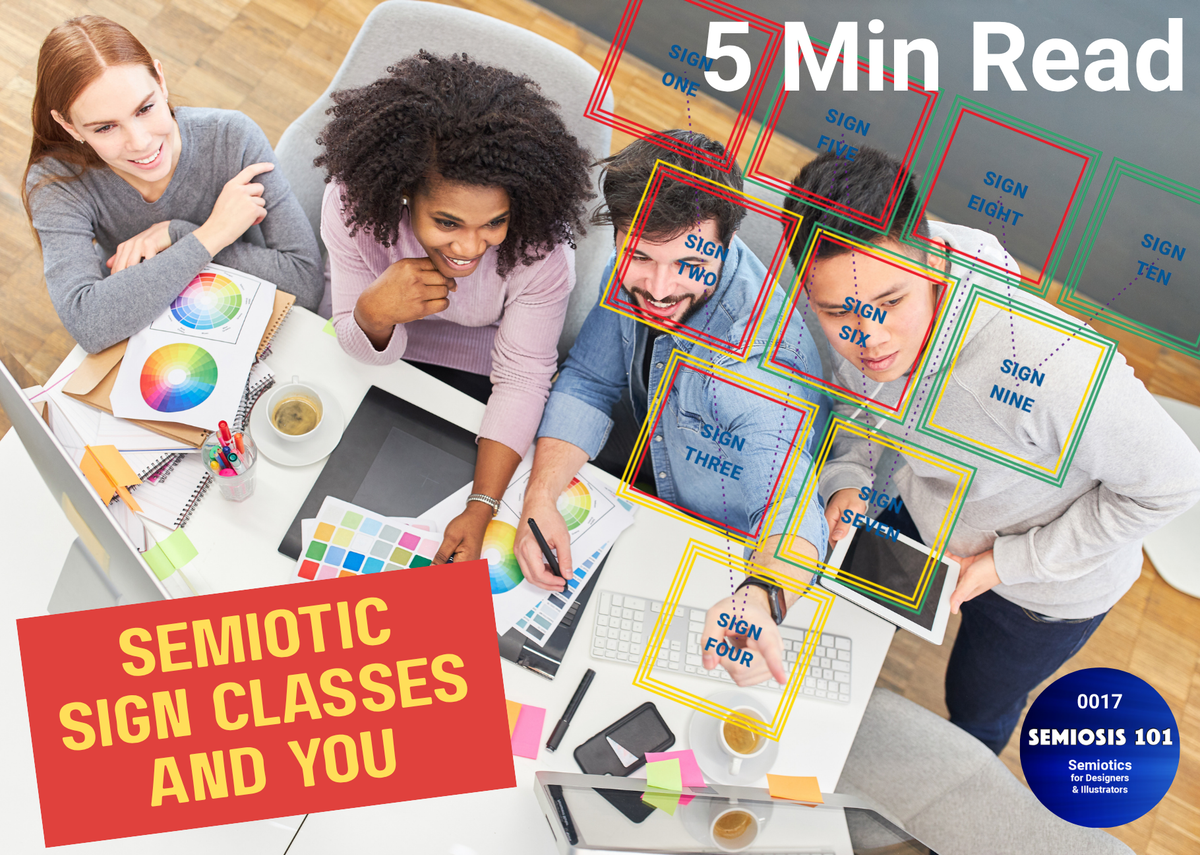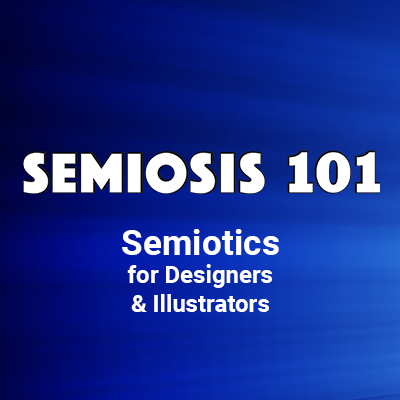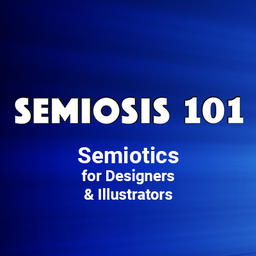BLOG 17: Semiotic Sign Classes and You

Semiosis 101 - 5 minute semiotic read
In the Semiosis 101 video episodes, and in my new 2026 Semiotics for Designers and Illustrators book, I have spent time putting Peirce’s ten pragmatic semiotic sign classifications into visual communication contexts. As designers and illustrators, if you were to go directly to Peirce’s texts to read about them you would be very quickly disorientated by his obtuse terminology.
If you were then to break through his terminology to his underlying theory you would be overwhelmed and find yourself out of your creative depth. Trust me. When I was writing my PhD I had to stop and go off and learn what all his terms meant before I could begin to use his theory to semiotically structure any of my visual communications. You cannot afford that time or dedication, so here’s a quick overview.
Semiosis (semiotic sign-action) is not linear process but helical. It is an interplay between a concept (Peirce’s Object), its representation (Peirce’s Representamen) and interpretation (Peirce’s Interpretant). Meaning needs to be visually communicated This is the concept which is visualised within your visual language decisions as representation of the concept. This representation is then decoded by the target audience through interpretation to understand what was meant.
The visual semiotic communication of the concept begins at the lowest semiotic sign-action power employing qualities, possibilities, familiarities and resemblances to instantly trigger facets of a deeper meaning in the minds of the audience. This semiotic power is predicated on compounding three facets of semiotic communication together:
Perception Power (sign intensity)
Communication Power (concept representation)
Delivery Power (the effect on audience)
Peirce’s ten sign classifications are structured using these. Each sign class exists in one of the phenomenological levels of Firstness, Secondness and Thirdness. Each of the ten sign classes’ power comes from how the Perception, Communication and Delivery semiotically interact.
Each sign class is defined by three words. The first word describes the Perception Power of the semiotic sign. The second word describes how the meaning is communicated and the third describes the type of “vehicle” that the sign uses to visually carry the meaning.
In plain terms we can frame each power level triadically as:
Perception Power
possible, suggested, resolved
Communication Power
familiar, existent, proxy
Delivery Power
instant, mediated, agreed
Peirce illustrates his ten semiotic sign classes in an inverted pyramid, which is read in rows diagonally downwards from Sign One, zig-zagging up and down all the way to Sign Ten (see image).
The first word in a sign class name can either perceptually be possibly proposing (Rhematic), or actually suggesting (Dicent), or employing an agreed understanding (Argument) that the perceived meaning is what the audience perceives it as.
Its second word relates to whether your visual elements using communication is using lines, shapes, marks, colours, etc. to propose familiarity (Iconic representation) using resemblances, or a more direct connection to known things (Indexical representation), or a socio-cultural agreement that when the audience sees THIS in this context they understand it actually means THAT (Symbolic representation).
The third word explains the semiotic “sign-vehicle” used to convey the meaning-bearing visual elements in your aesthetic. This semiotic delivery is either instant (Qualisigns), or single-hits of semiotic mediation of facets of the full meaning (Sinsigns), or a socio-culturally agreed meaning (Legisigns).
SIGN ONES are instant hits of possible meaning from familiar qualities. Their job is not to visually communicate ALL the intended concept at once. Once a quality is perceived as possibly familiar to something, it’s semiotically mediating meaning in the minds of the target audience.
SIGN ONE then hands over to SIGN TWO which helps facilitate the audience to interpret meaning within certain thematic latitudes set by your visual ’tone of voice.’ Then SIGN THREE helps the audience’s interpretations toward possible existent things they have already experience of.
The class of SIGN FOUR has been described as a sign of “direct experience,” where the audience’s prior experiences help them to subconsciously understand what is now visually communicated. SIGNS FIVE to TEN move semiotic mediation from mere possibilities and suggestions towards general socio-culturally agreed meaning.





